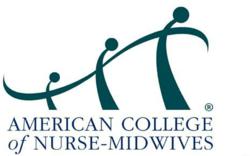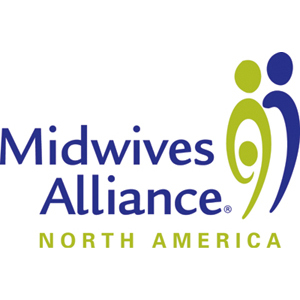July 27, 2012
Midwifery Organizations Band Together in Support of Normal Physiologic Birth
By: Sharon Muza, BS, LCCE, FACCE, CD/BDT(DONA), CLE | 0 Comments
 In May of this year, three leading midwifery organizations, American College of Nurse Midwives (ACNM), Midwives Alliance of North America (MANA) and National Association of Certified Professional Midwives (NACPM) jointly released a statement titled "Supporting Healthy and Normal Physiologic Childbirth; A Consensus Statement by ACNM, MANA and NACPM," intended for health care professionals and policymakers. This strongly worded statement supports healthy and normal physiologic childbirth for for U.S. women. It is logical that the three main U.S. midwifery organizations coordinated in preparing this statement, as midwives are the gatekeepers of normal birth for low risk women. The purpose of the consensus statement, which was developed by a joint task force appointed from members of the three midwifery organizations was to:
In May of this year, three leading midwifery organizations, American College of Nurse Midwives (ACNM), Midwives Alliance of North America (MANA) and National Association of Certified Professional Midwives (NACPM) jointly released a statement titled "Supporting Healthy and Normal Physiologic Childbirth; A Consensus Statement by ACNM, MANA and NACPM," intended for health care professionals and policymakers. This strongly worded statement supports healthy and normal physiologic childbirth for for U.S. women. It is logical that the three main U.S. midwifery organizations coordinated in preparing this statement, as midwives are the gatekeepers of normal birth for low risk women. The purpose of the consensus statement, which was developed by a joint task force appointed from members of the three midwifery organizations was to:
- Provide a succinct definition of normal physiologic birth;
- Identify measurable benchmarks to describe optimal processes and outcomes reflective of normal physiologic birth;
- Identify factors that facilitate or disrupt normal physiologic birth based on the best available evidence;
- Create a template for system changes through clinical practice, education, research, and health policy; and
- Ultimately improve the health of mothers and infants, while avoiding unnecessary and costly interventions.
A normal physiologic labor and birth is one that is powered by the innate human capacity of the woman and fetus. This birth is more likely to be safe and healthy because there is no unnecessary intervention that disrupts normal physiologic processes. Some women and/or fetuses will develop complications that warrante medical attention to assure safe and healthy outcomes. However, supporting the normal physiologic processes of labor and birth, even in the presence of such complications, has the potential to enhance best outcomes for mother and infant.
These three organizations recognize the current state of U.S. maternity care and acknowledge how technology and interventions are being commonly used despite the lack of scientific evidence supporting routine applications. (Sakala, 2008.) Some of the interventions cited including pitocin being used to induce or augment more than half of all pregnant women's labors. (Declercq, Sakala, 2006.) The cesarean rate in the United States is more than 33%. (Martin,Hamilton, Ventura 2011.) This cesarean rate is not without risks for both mothers and babies with the original cesarean birth but also recognizes the complications to subsequent pregnancies and birth. The organizations also commented that women who have perceived their birth or the care they received as traumatic or disrespectful are more likely to develop postpartum mood disorders and potentially difficulty in establishing healthy mother-infant attachment. (Beck, 2004), (Beck, Watson, 2008), (Beck, 2006). The consensus statement goes on to state the characteristics of normal physiologic birth;
The consensus statement goes on to state the characteristics of normal physiologic birth;
- is characterized by spontaneous onset and progression of labor;
- includes biological and psychological conditions that promote effective labor;
- results in the vaginal birth of of the infant and placenta;
- results in physiological blood loss,
- facilitates optimal newborn transition through skin-to-skin contact and keeping the mother and infant together during the postpartum period; and
- supports early initiation of breastfeeding. (World Health Organization 1996).
When I was reading the above list, as outlined by the World Health Organization and cited in the consensus statement, I was stuck by how these statements are in sync with Lamaze International's Healthy Birth Practices. I was also a bit discouraged that these statements, published by WHO in 1996 sometimes still seem a distant goal.
There are factors that interfere with the normal physiologic process, including many that you may be very familiar with; induction or augmentation of labor, lack of a supportive environment, time limits on labor, denial of food and drink, pain medications, episiotomies, vacuum or forceps assisted deliveries, cesareans, immediate cord clamping, separation of the new mother from her newborn and finally, a situation that may feel threatening or unsupportive to the mother.
The consensus statement recognizes the numerous short-term and long-term health implications of normal birth to the mother-baby dyad. Allowing labor and birth to unfold without interference permits labor and birth hormones to work effectively, thereby reducing the need for the familiar "cascade of interventions."
For most women, the short-term benefits of normal physiologic birth include emerging from childbirth feeling physically and emotionally healthy and powerful as mothers...A focus on these aspects of normal physiologic birth will help to change the current discourse on childbirth as an illness state where authority resides external to the woman to one of wellness in which women and clinicians share decisions and accountability. (Kennedy, Nardini, McLeod-Waldo, 2009).
When women enter motherhood from a position of strength and confidence, babies benefit, families benefit and society benefits. Multiple factors for the woman, the clinician and the birthing environment help to promote women birthing without intervention. All three sides of an important triad need to share equal responsibility in meeting this goal.
The consensus statement indicates that education plays a role in helping women obtain a normal physiologic birth. The role of the childbirth educator cannot be underestimated. Sharing the values of Lamaze and the Lamaze Healthy Birth Practices is right in line with the midwifery statement.
ACNM, MANA and NACPM go on to encourage hospital policies to be set that support normal birth, the recognition that care practices need to be evidenced based. Midwifery care is a "key strategy" in that direction. Education of clinicians on care practices that promote physiologic birth and furthering research on the effects of normal birth, among other things.
This consensus statement is clear and powerful in demonstrating that our mothers and babies deserve, depend on and require the opportunity to birth without interventions and that everyone will benefit as a result, in the absence of medical complications or medical need. I look forward to policy changes, increased accessibility of mothers to midwives and the midwifery model of care and collaboration of all health care providers, both doctors and midwives, to promote practices that result in an increase in normal physiologic birth.
Take a moment to read the entire consensus statement and let me know what you think? A step in the right direction? What comes next? Do you think it is exciting that these three organizations have worked together to come out with this bold challenge to make change? What do you do in your childbirth classes or with the women you work with to promote these values represented by the consensus statement. Would you add anything else? I welcome your discussion in our comments section. - SM
Sources
Beck CT. Birth trauma: in the eye of the beholder. Nurs Res. 2004; 53(1):28-35.
Beck CT, Watson S. The impact of birth trauma on breastfeeding: a tale of two pathways. Nurs Res. 2008; 57(4):228-236.
Beck CT. The anniversary of birth trauma: failure to rescue. Nurs Res. 2006; 55(6): 381-390.
Beck CT.Post-traumatic stress disorder due to childbirth:the aftermath.NursRes, 2004; 53(4):216-224.
Declercq ER, Sakala C, Corry MP, et al. Listening to mothers II: Report of the Second National U.S. Survey of Women's Childbearing Experiences. New York: Childbirth Connection; 2006.
Kennedy HP, Nardini K, McLeod-Waldo R, et al. Top-selling childbirth advice books: a discourse analysis. Birth. 2009;36(4):318-324.
Martin JA, Hamilton BE, Ventura SJ, et al. Births: preliminary data for 2010. Natl Vital Stat Rep. 2011; 60(2):1-25.
Sakala C, Corry MP. Evidence-based maternity care: what it is and what it can achieve. New York, NY: Milbank Memorial Fund; 2008.
World Health Organization. Care in Normal Birth: A Practical Guide. World Health Organization; 1996.
Tags
Traumatic birth Interventions Midwifery Care Lamaze International WHO World Health Organization Healthy Birth Practices Birth Trauma Midwives Labor/Birth Newborns Babies Healthy Care Practices ACNM Infants MANA NACPM